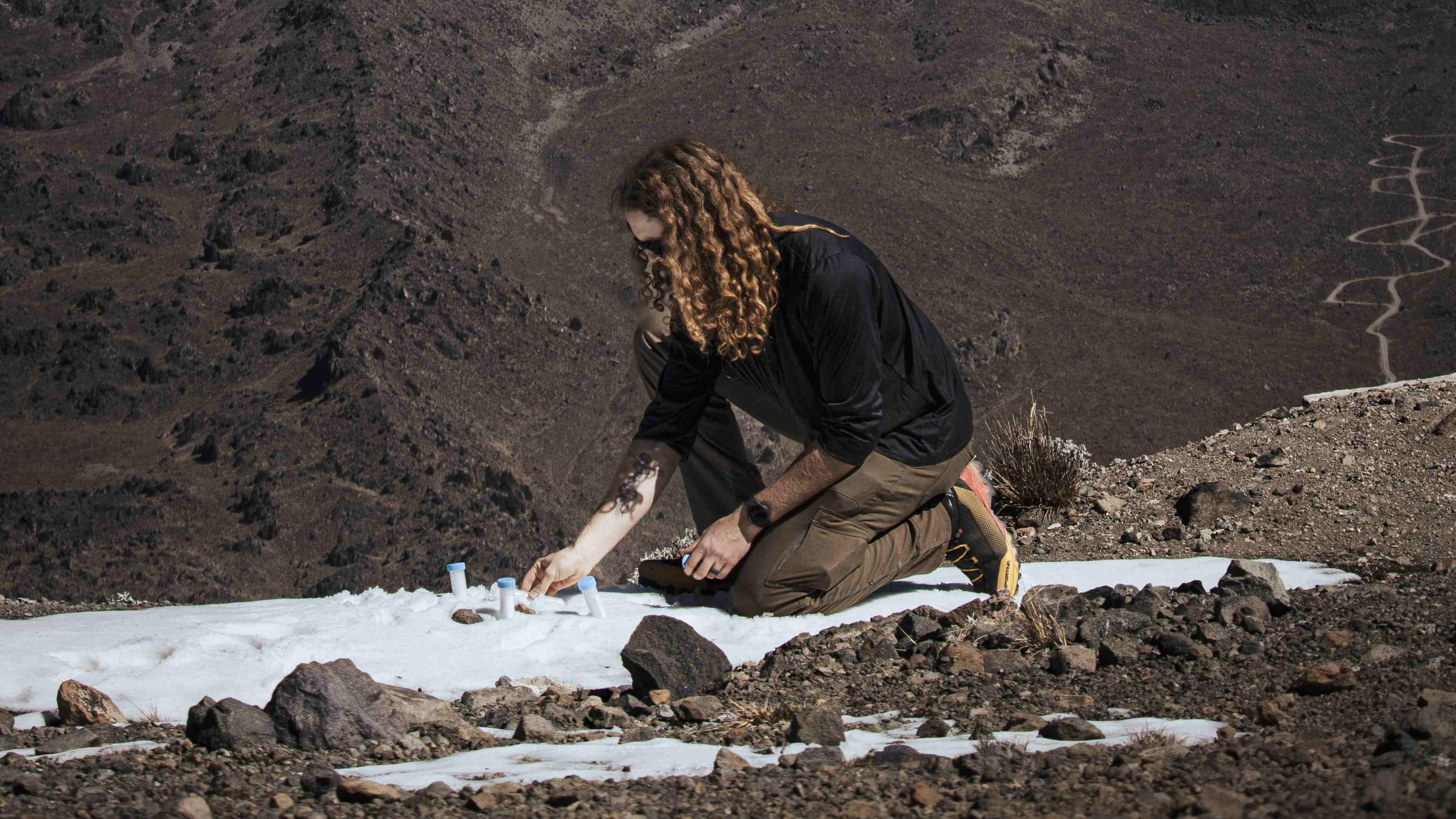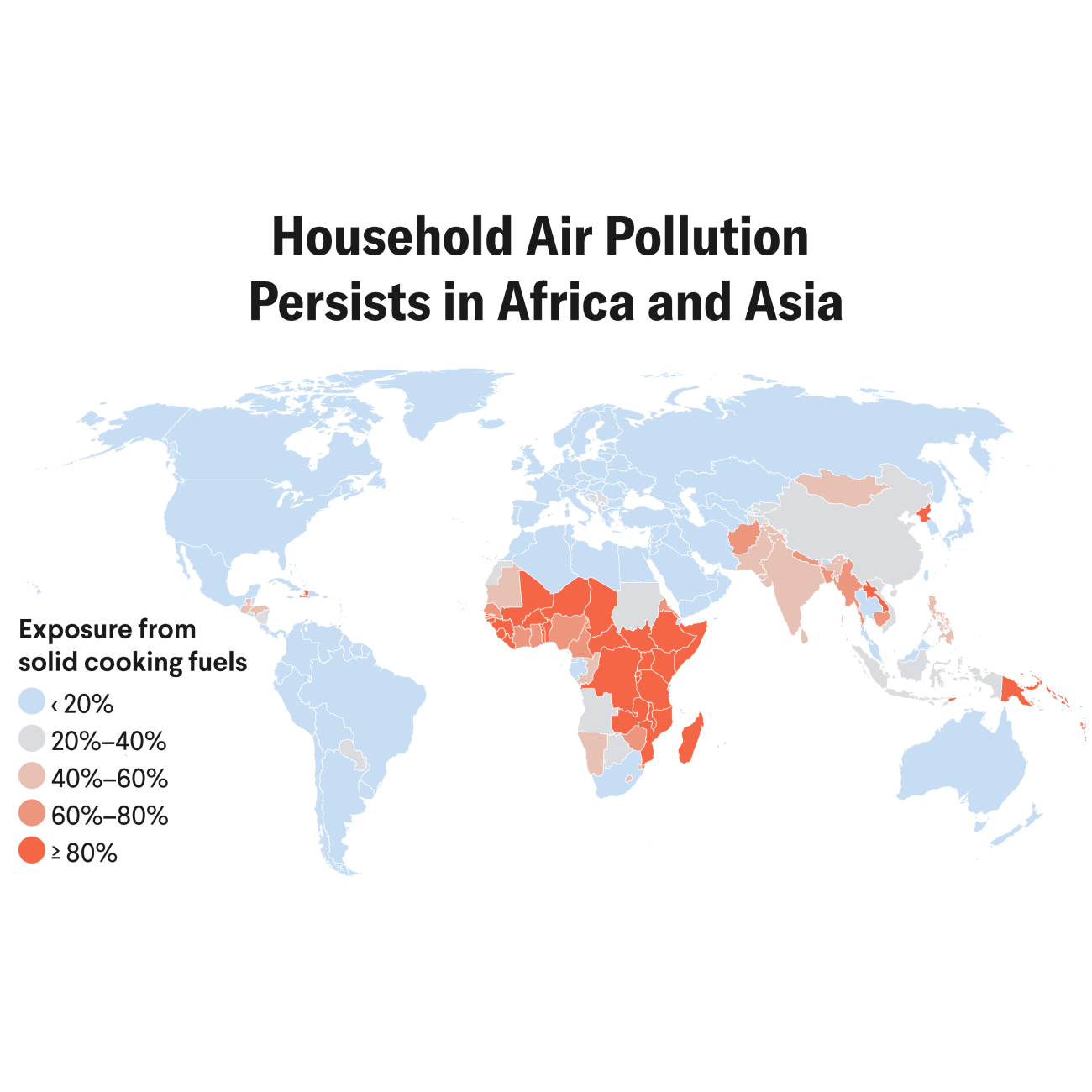A group of medical students and naturalists stood roped together on a glacier covering the upper reaches of Pico de Orizaba, the 18,491-foot volcano that hovers over central Mexico.
What they could not see—and what their research aimed to uncover—was whether tiny plastic particles, once discarded into the environment, had found their way into the highest reaches of the atmosphere, the clouds, and even their breath.
Recent research has revealed that microplastics, once thought to be confined to oceans and soil, are now detected "everywhere one looks," raising concerns that these particles are infiltrating the food web and the water cycle and potentially harming respiratory health. Microplastics are present in human organs, drinking water, food, and even the air people breathe. Alarming amounts of plastic are accumulating inside of human brains, roughly equivalent to the weight of a plastic spoon according to one study. A new study led by students at the University of Texas Health Science Center at Houston (UTHealth) will shed light on the pattern of high-altitude snow and airborne microplastic pollution.
These studies are just one part of the puzzle. The responsibility to act in every way possible to mitigate damage to the earth's living systems is a shared one. Such changes could involve expanding air pollution monitoring to include microplastic detection, reducing plastic waste at the source, and funding further research on the health effects of microplastics. This project underscores the need for more air quality monitoring and targeted policies—especially in regions already burdened by additional environmental exposures.







Pico de Orizaba, December 2024
An aerial view of Monterrey Mountains, December 2024
Jamapa Glacier at Pico de Orizaba, December 2024
Jacob Bartz, research expedition lead, collects a saliva sample, at Pico de Orizaba base camp, December 2024.
A researcher takes samples at Sierra Negra.
A researcher handles samples, December 2024.
"Summit Thoughts of Atmospheric Microplastics," an illustration by William McCarthy
"On the Glacier," an illustration by William McCarthy
Airborne Microplastics and Human Health
Microplastics have been detected in clouds floating between 4,200 and 12,000 feet and enter the atmosphere through urban emissions, industrial processes, and windborne transport. They also enter our lungs.
Inhaled microplastics present a disturbing health challenge. Research suggests that plastics can penetrate deep into the alveoli of the lungs, leading to inflammation, oxidative stress—cell damage from by-products—and potential long-term respiratory or cardiovascular effects. The risks are particularly pronounced for children, whose developing lungs are more vulnerable to airborne contaminants. In addition, children, especially infants and toddlers, breathe at faster rates than adults, inhaling up to 50 times more particles, thus accentuating the risk of respiratory issues from airborne microplastics.
The Expedition: Tracking Microplastics in Extreme Environments
In their expedition, the University of Texas students took a novel approach: They collected water, snow, and saliva samples from elevations ranging from roughly 12,000 to 18,500 feet to study whether microplastics were present in the local atmosphere. Armed with 50 milliliter tubes, the students stopped at altitude intervals of 500 vertical feet to collect their spit. Saliva, as past studies show, contains mostly particles under 100 microns—the width of a piece of paper—the size range most likely to lodge in the lungs.
Researchers collected snow samples, sometimes gathering from behind large boulders or stopping on steep icy slopes, scraping dense, cold crystals into the collection tubes. They scaled two neighboring peaks, Sierra Negra (Iztactepetl Icni in local Nahuatl language) and Pico de Orizaba (Citlaltepetl). Reports have already confirmed that microplastics are present in Arctic and Alpine snow, but data on their distribution at such extreme elevations in North America is limited.
Pico de Orizaba's glaciated slopes are a key water source for the people of Mexico's Puebla and Veracruz states. The Jamapa Glacier, which sits on its northern slopes, has been retreating at an alarming rate, one of many facing glacial melt due to climate change. As glaciers shrink, they release decades of accumulated pollutants, including microplastics, according to a study on the effects of global warming on the environmental fate of microplastics.
As glaciers shrink, they release decades of accumulated pollutants, including microplastics
The region is also regularly exposed to volcanic ash and fine particulate matter from the nearby active Popocatépetl volcano. Ash emissions contribute to high levels of airborne irritants that could also exacerbate lung damage when combined with inhaled microplastics, thus exposing the local communities to synergetic effects of several airborne contaminants.
The students' expedition builds on innovative approaches in the field of atmospheric microplastic research by Dimitri Deheyn's lab at Scripps Oceanography, University of California San Diego. Deheyn has equipped single-engine planes traveling around the world, from pole to pole and along the equator, with collection devices for airborne particles. The Deheyn lab also studies, through the Biomimicry for Emerging Science and Technology (BEST) Initiative, how different materials break down in marine environments, connecting industry partners with academic research to develop sustainable alternatives to purely synthetic materials. These singular research approaches—from plane flight collections to materials innovation—exemplify the outside-the-box thinking needed to understand and address this global health challenge and to meet people’s responsibility to this planet.
The Need for Global Action
In 2022, United Nations adopted a resolution titled "End plastic pollution: towards an international legally binding instrument [PDF]," which calls plastic pollution a "serious environmental problem at a global scale."
The resolution [PDF] is currently the sole international policy addressing airborne microplastics. Further, the U.S. government is now defunding research institutions that study ecological disturbances even though these fields have been marginalized for decades. Since the 1980s, for example, only 0.26% of NIH research awards have involved climate change. Such regulatory and economic gaps leave significant questions unanswered, including how much plastic humans are inhaling daily, the long-term consequences for communities (especially those with synergetic effects from other stressors), and what role policymakers should play in mitigating exposure.
Scientists can take steps to better understand the macro problem of microplastics. For example, models made to map the health effects of air pollution could be built upon to study microplastics as well. A recent study attributed an estimated 5.13 million deaths yearly to ambient air pollution, specifically by fossil fuel use, and recommended phasing out fossil fuels in favor of renewable energy. Investigating microplastic pollution and its health consequences could similarly provide evidence to policymakers in favor of sustainable solutions.
Potential strategies for addressing the microplastic issue include actions that everyone can take. Regular citizens can educate themselves by using digital trackers to monitor local and global air quality, helping them better understand environmental health problems. They can also opt for sustainable products and not support fast fashion industries that depend on synthetic textiles. Beyond individual choices, confronting consumerism itself—using artistic, literary, or rhetorical tools to challenge wasteful habits and inspire sustainability—can play a powerful role in shaping a healthier future.
From a One Health perspective, scientists need to convey better to policymakers and the public how important the balance is between environmental health and human health: If the fish in the sea and the birds in the air are not healthy, neither are humans. Recent models show that most airborne microplastics come from densely populated regions and that the ocean acts as the main "sink" of these particles. In Veracruz state, Mexico, microplastics have been detected in water and in commercially harvested fish along the coast. Yet promising solutions exist.
For instance, researchers have developed reusable, highly efficient microplastic-absorbing sponges made from squid bone and cotton for scalable removal of plastics from water. Recent work in membrane bioreactors has revealed promising solutions for removal of plastics from wastewater, but highlights the need for policy change and awareness upstream of pollution. On the social front, Indigenous-led frameworks have long addressed local and global sustainability.
As the UTHealth students packed up their samples and began their descent, a nauseating thought lingered: Perhaps pollution is not just an environmental crisis, but also a fundamental reshaping of the planet’s natural systems. Although the scientists aimed to quantify and characterize the pattern of inhaled microplastics at high altitude through this study, they had no doubt that microplastics would be found. Given the emissions unseen from cities and factories, the polyester they wore, the outsoles of so many boots climbing the glacier, of course microplastics are everywhere, simply because humans are everywhere.
The challenge now is not only to measure this phenomenon, but also to change the behaviors that feed it. People need to tune in to the rhythms of the earth and invest in solutions—scientific, social, and systemic—that protect both planetary and human health.














